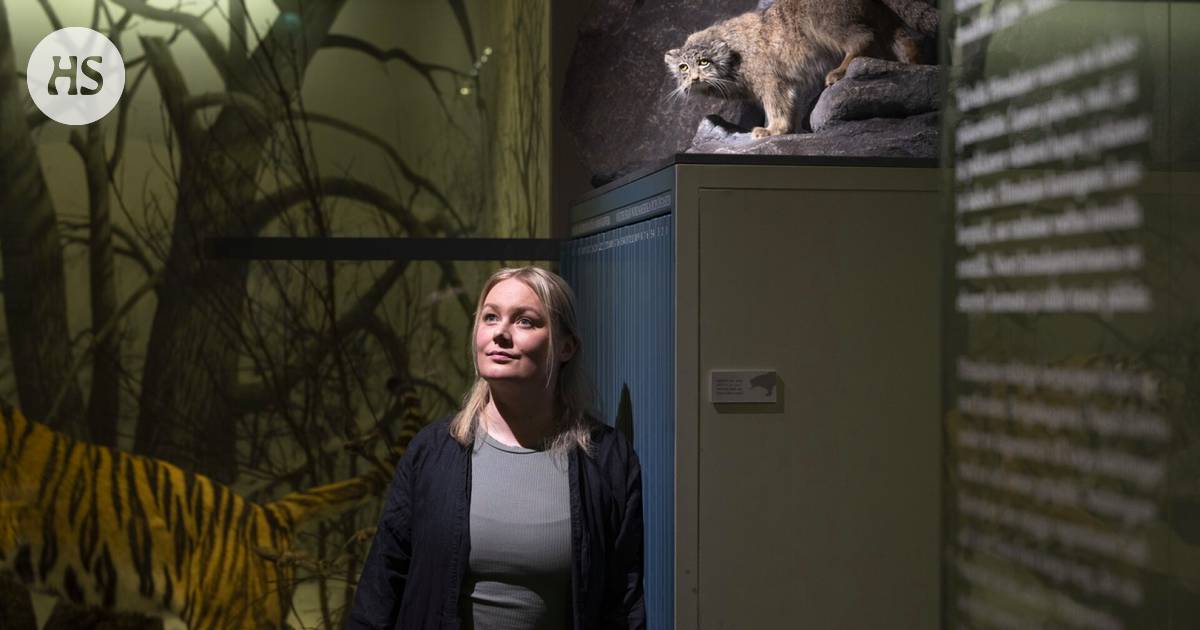from Vantaa Elina Laurén graduated at the end of February in a very rare field.
So rare that the last time students were admitted was about eight years ago. Even now, Laurén only had one study friend. In total, people work in the profession all over Finland about 30 people.
Laurén became a conservator in the field of natural science, for example stuffing animals for museum exhibitions and preparing various samples for the needs of researchers. Conservators are trained irregularly, mostly when museums need new professionals.
During her studies, Laurén has had time to participate in, for example, a nationally known event Hamina's walrus in conservation. He got to paint the walrus skin and remove its meat from the skeleton, which was not exactly easy.
“It was an ungodly big animal compared to anything else. I almost had to crawl inside the walrus to get the meat shredded out of the chest. After all, it was dirty work,” he says.
The walrus that washed ashore in Hamina is currently on display in the Natural History Museum. Laurén was there when the walrus was preserved. He painted its leather.
From before by education, Laurén is a biologist from the University of Helsinki. After graduation, he worked in Vantaa at the Heureka science center as a trainer for basketball rats. The days included a lot of taking care of the rats and playing with them.
“It was a completely different job when you were dealing with living animals and now dead ones,” he says.
Heureka only offered part-time work. So when Laurén saw the announcement that the museum was looking for conservator students, he decided to “try ice with a stick”.
There were several dozen applicants, but only two places. The entrance exam included an interview. In addition, a bear had to be molded out of clay and a pine tree had to be drawn without any model images.
“It was a stressful situation, but apparently it went well in the end,” says Laurén.
At the end of the year 2020 Laurén was able to start conservation apprenticeship studies, which lasted three years. He worked full-time at the museum and slowly accumulated a professional qualification for himself.
Coming from the university world, Laurén had expected that her studies would include a lot of reading books and listening to lectures, but the image was not at all true.
“I came to work on the first day, and there was a bump jump on my desk. They said take the skin off it. After all, it was quite a struggle to begin with,” he recalls.
Hömötiainen's skeleton was so light that Laurén wore a face mask when working with the bones. Without it, the air flow caused by his breathing would have set the bones in motion.
Over the course of three years, Laurén learned, for example, how to handle animal skins, prepare and assemble their bones, and stuff animals into natural positions.
He says that filling the animals that come to museum exhibitions is only the tip of the iceberg. A large part of the animals is used for research.
The studies also included an exchange course in Switzerland, where Laurén says she learned “Swiss precision”.
As his final work, he filled a manuli, or aro cat, from Korkeasaari. This was very challenging for him, because the cat's skin is stretchy and therefore it had to be measured and filled especially carefully. In addition, the pose and facial expression had to be as natural as possible.
“It always brings an extra challenge when people know what the animal should look like,” he says.
Laurén's thesis also included, for example, the conservation of the Javan rhinoceros skeleton. The bones were cleaned with an ultrasonic cleaner intended for cleaning space technology.
The best According to Laurén, the work of a conservator is versatile and when, for example, cleaning leather allows you to sink into a very deep state of concentration.
According to him, the most difficult thing at work is simply “everything”. According to him, the design of animals requires the techniques of a sculptor without any artistic liberties. Also doing the finishing touch is often challenging.
Still, he has enjoyed his new profession and will continue to renovate the skeleton hall of the Natural History Museum in a temporary employment contract. In my spare time, painting abstract art provides a counterweight.
If a rare training position opens again in the future, Laurén recommends the job to people who have previous knowledge of nature and some degree of three-dimensional visualization.
Above all, according to him, work requires “endless nerves and patience”.
“You have to have a genuine interest in the work, because learning is really slow at best. You have to be calm to sit at the table.”
Laurén watches her colleague Roni Andersson's work on the gourd in the conservators' workspace. A chicken hawk in the foreground.
We also talked about Laurén's rare profession before University magazine.
#Working #life #Elina #Laurén #graduated #conservator #rare


/s3/static.nrc.nl/wp-content/uploads/2024/04/web-3004buigeorgie.jpg)

